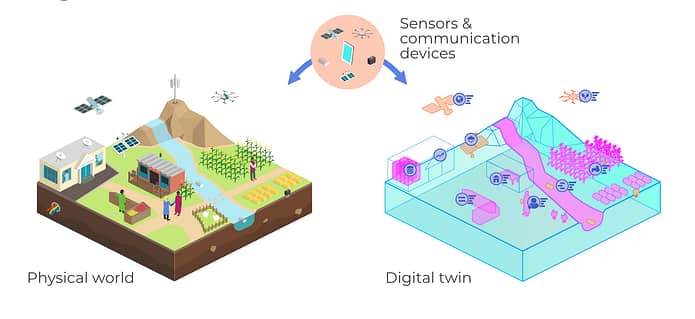By Youssef Brouziyne, Country Representative, IWMI-Egypt and Regional Representative MENA
You don’t need to read the latest reports to know that droughts have increased in frequency and severity over the last decades. Just ask the farmers. They are the ones on the frontline of both the rising temperatures and the irregular rainfall that are devastating their crops and incomes. Those same reports tell us that the number and duration of droughts have risen by almost 30% since 2000 and that 2.3 million people are already experiencing water scarcity1.

With climate change expected to increase drought risks in many vulnerable regions, including the Middle East and North Africa (MENA) region, that picture is not likely to improve any time soon.
Drought is about much more than unpredictable rain and water shortages. Its impacts cut across environmental, social, and economic dimensions. It drives migration, threatens food security, contributes to land degradation and biodiversity loss, depletes freshwater supplies, and impacts rural livelihoods and economic growth. Its effects are both immediate and long-term. This is why the results that we are starting to see from MENAdrought in Jordan, Lebanon, and Morocco are so important for other countries too, especially as governments around the world urgently seek ways to build resilience to climate change.
MENAdrought is a multi-country project led by my organization, the International Water Management Institute (IWMI). It is helping to empower countries in one of the driest corners of the world to prepare, adapt, mitigate, and respond to the impacts of droughts, for example, through development of early warning systems. It is supported by the United States Agency for International Development (USAID).
Advances in digital sciences and technology are changing the landscape when it comes to predicting and monitoring droughts. We are increasingly able to look further into the future with the help of freely available data coming from earth observation satellites. Countries can now get a three-month warning that drought is coming and that drought-readiness plans need to be enacted. That might mean supporting pastoralists to move livestock to areas that will be less affected, or optimizing water allocation and use, depending on the characteristics of the coming drought (severity, duration, and magnitude).and the potential impacts – not all drought episodes are similar and they might impact people differently. We are starting to understand this much better now by looking at the impacts of past and present droughts on both rain-fed and irrigated agriculture systems. To help us do this, we are using a map-based monitoring system developed by IWMI in collaboration with NASA, which uses an enhanced-Composite Drought Index (eCDI).
While advances in data science mean our scientists can develop better tools to support countries with drought risk management, they are not enough on their own. For policymakers and planners to act in a targeted and effective way, they also need to know who will be hit hardest and why. This is why MENAdrought is so unique. It combines all the elements together in a systems-focused way.
The impact and vulnerability assessments we have done through the project have helped us to find out which communities, economic sectors and environments are the most impacted by droughts, and why. This kind of information is critical for prioritizing investments in infrastructure, policy, institutions, and information systems. And the results may not always be directly connected to water management. In Morocco, for example, only 2% of rural women own land and only a quarter of women have access to an independent bank account2. This excludes many women from the formal financial sector, reducing their access to regulated short-term loans in times of difficulty, such as drought, and increases their risk of food insecurity.
By taking the data gathered from the early warning and monitoring systems and overlaying it with the assessments on drought vulnerability, countries can be more targeted in their actions, policies, and plans to help those that are likely to be hardest hit first get prepared.
One thing that we can be sure of is that if we don’t take pre-emptive action to turn the tide on drought preparedness, we are very likely to see devastating impacts on food and water security for millions of people. The MENAdrought initiative has shown that, thanks to science and digital solutions, the self-reliance of countries in the inclusive management of drought impacts is possible.
Dr. Youssef Brouziyne is IWMI’s Regional Representative – MENA
The theme of the 2022 United Nations World Desertification and Drought Day (17 June) is Rising Up From Drought Together. It focuses on drought and early actions to prevent disastrous outcomes. MENAdrought is led by IWMI and supported by United States Agency for International Development (USAID). IWMI is a Research Center of CGIAR, a global research partnership for a food-secure future.
References:
[1] Drought in Numbers, UNCCD
[2] Conseil Économique Social et Environnemental (CESE), 2014. Promotion de l’Égalité entre les Femmes et les Hommes dans la Vie Économique, Sociale, Culturelle et Politique. Les Discriminations à l’Égard des Femmes dans la Vie Économique: Réalités et Recommandations. Royaume du Maroc.
This piece was originally published in Arabic on SciDev MENA.
















